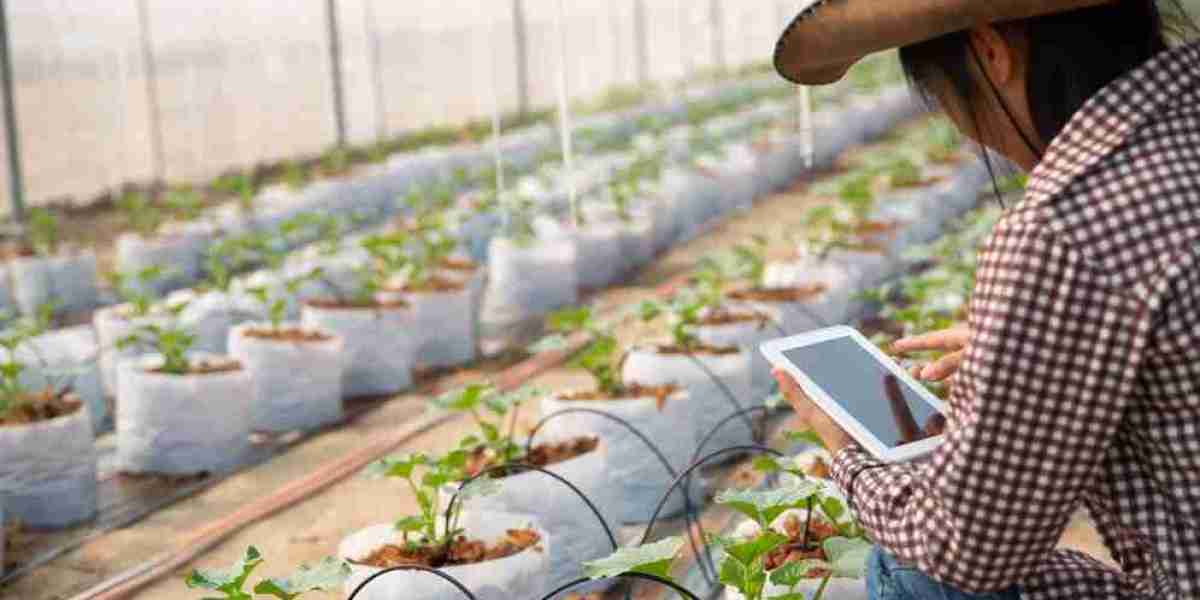The biostimulants market is rapidly evolving, driven by the growing need for more sustainable, efficient, and eco-friendly agricultural solutions. Biostimulants are natural or synthetic substances and microorganisms that enhance plant growth, improve resilience to environmental stresses, and optimize nutrient uptake. They offer a range of solutions that help farmers increase crop productivity while minimizing the impact on the environment. As the agricultural industry faces increasing pressure to adopt sustainable practices, biostimulants are proving to be a vital tool in modern farming systems.
1. Enhancing Nutrient Uptake and Efficiency
One of the primary solutions offered by biostimulants is improved nutrient uptake. Many biostimulants, including seaweed extracts, amino acids, and microbial formulations, promote better root development and enhance the plant's ability to absorb essential nutrients from the soil. By improving nutrient uptake, biostimulants help plants grow stronger and more resilient, while also reducing the need for synthetic fertilizers. This not only improves crop yields but also minimizes the environmental footprint of farming, as less fertilizer runoff contributes to soil and water pollution.
2. Stress Tolerance and Environmental Resilience
Biostimulants play a critical role in enhancing plant tolerance to environmental stresses, such as drought, extreme temperatures, high salinity, and pest attacks. With climate change increasing the frequency and intensity of extreme weather conditions, biostimulants offer a valuable solution to ensure crops can withstand these challenges. For instance, biostimulants derived from seaweed and plant hormones help regulate plant growth, improve water retention during droughts, and boost stress-related biochemical pathways. By improving resilience, biostimulants ensure that crops maintain productivity even under adverse conditions.
3. Promoting Soil Health and Fertility
Soil health is a key factor in agricultural sustainability, and biostimulants provide effective solutions for improving soil quality. Microbial biostimulants, which contain beneficial bacteria and fungi, can enhance soil microbial activity, promote nutrient cycling, and improve soil structure. These biostimulants increase organic matter in the soil and enhance its ability to retain moisture and nutrients, creating a more fertile environment for crops. By improving soil health, biostimulants help ensure long-term soil productivity, reducing the need for chemical fertilizers and pesticides, which can degrade soil quality over time.
4. Supporting Organic and Sustainable Farming
With growing demand for organic and sustainable agricultural products, biostimulants offer significant solutions for farmers seeking to meet these market needs. Biostimulants are often derived from natural sources, such as algae, fungi, and plants, and are approved for use in organic farming systems. Their use helps improve crop yield and quality while adhering to organic farming principles, which restrict the use of synthetic chemicals. By incorporating biostimulants into organic farming practices, growers can increase productivity, reduce dependency on chemical inputs, and ensure environmental sustainability.
5. Enhancing Post-Harvest Shelf Life and Quality
Biostimulants also offer solutions in post-harvest management, ensuring that crops maintain their quality and extend their shelf life. After harvest, fruits and vegetables are susceptible to rapid degradation, but biostimulants such as plant extracts and seaweed-based formulations can slow down the ripening process, reduce spoilage, and preserve nutritional value. This is particularly valuable in reducing food waste, as longer shelf life means less produce is discarded before it can be consumed.
6. Customization for Crop-Specific Solutions
Another key solution provided by biostimulants is the ability to tailor formulations to meet the specific needs of different crops. Advances in research and biotechnology have enabled the development of crop-specific biostimulants that target particular growth stages or environmental challenges. This customization enhances the effectiveness of biostimulants, allowing farmers to achieve optimal results for a variety of crops, including cereals, fruits, vegetables, and ornamental plants. By providing targeted solutions, biostimulants ensure that crops receive the precise support they need for maximum growth and yield.
Conclusion
The biostimulants market is offering a range of solutions that are helping farmers address the challenges posed by climate change, resource depletion, and the need for more sustainable farming practices. From improving nutrient uptake and enhancing stress tolerance to promoting soil health and supporting organic farming, biostimulants are becoming essential tools for the future of agriculture. As innovation in biostimulant technologies continues, these solutions are expected to play an even more significant role in shaping the agricultural landscape.



